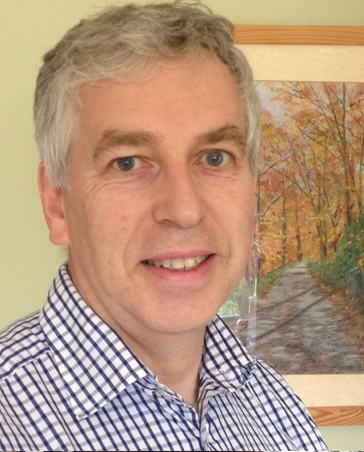Dr Peter Muir, Consultant Clinical Scientist in Virology
Just like their medically-qualified colleagues, consultant clinical scientists in virology spent their days trying to outwit infectious bugs – from containing the spread of illness in hospital wards and communities, to contributing to research on major threats to life. We speak to Dr Peter Muir about his work at Bristol’s PHE South West Regional Laboratory.
Give us a quick overview of your role – what do you do day to day, who do you work with and where?
As a consultant clinical scientist in virology I work in a large laboratory. Our business is diagnostic and public health microbiology and virology, so we perform diagnostic tests and screening tests on behalf of our users – mainly local hospitals and GP practices.
My role is a wide-ranging one. I provide clinical advice to our users on how to use the service, what samples to send, interpreting results of our tests, and advising on treatment and prevention of virus infections. This is done in a variety of ways – telephone advice, adding comments to laboratory reports, ward rounds... In addition I will do just about anything which helps to improve the service – evaluating new tests, developing our own tests, finding new ways of working, improving the IT system that links the laboratory with our users, undertaking research. I work most closely with biomedical scientists and medical staff, but also collaborate with University colleagues.
Recently I have been involved in a number of ongoing projects. One, to help GP practices increase the number of patients tested for and diagnosed with Hepatitis C. Another, to see if diagnosing respiratory virus infections in children presenting to their GP is helpful in reducing the amount of antibiotics prescribed for respiratory infections. And a project to build a small, onsite laboratory in the local sexual health clinic to see if we can diagnose and then treat sexually transmitted infections all within a single patient consultation – rather than asking the patient to come back a week later for their results.
What made you choose virology?
From my school days I was interested in microscopy and microbiology, so I specialised in medical microbiology at University. This lead to a PhD in Virology, and a few postdocs before becoming a clinical scientist. This is a great job because it mixes clinical service with research and development.
What do you enjoy most about your job?
No two days are ever the same. The scope of activity is broad, and there are frequent surprises, ranging from an unexpected diagnosis to a new outbreak (currently measles) – even pandemic influenza!
What thing are you most proud of in your career so far?
I am most proud of the fact that I have been able to supervise and mentor a couple of clinical scientist trainees through their training programmes. There’s a real need across pathology to prepare the next generation of clinical scientists, so to contribute to training, and to see young scientists flourishing is particularly satisfying.
What do you think is the most surprising or unusual thing about your specialty?
Virology is a modern discipline. We rarely use microscopes, test tubes or cell cultures in diagnostic virology laboratories. Instead we use automated analysers and robotic nucleic acid extraction systems to detect viral antibodies and nucleic acids. The technology we use is becoming more sophisticated by the day, with more robotics, artificial intelligence and point-of-care testing on the horizon.
What advice would you give scientists entering your field?
Virology is a small specialism, so there aren’t too many roles like mine. However the clinical scientist training program starts as a generic program in microbiology and virology for the first three years – you don’t need to commit to one or the other until you are sure which way you’d like to go.
